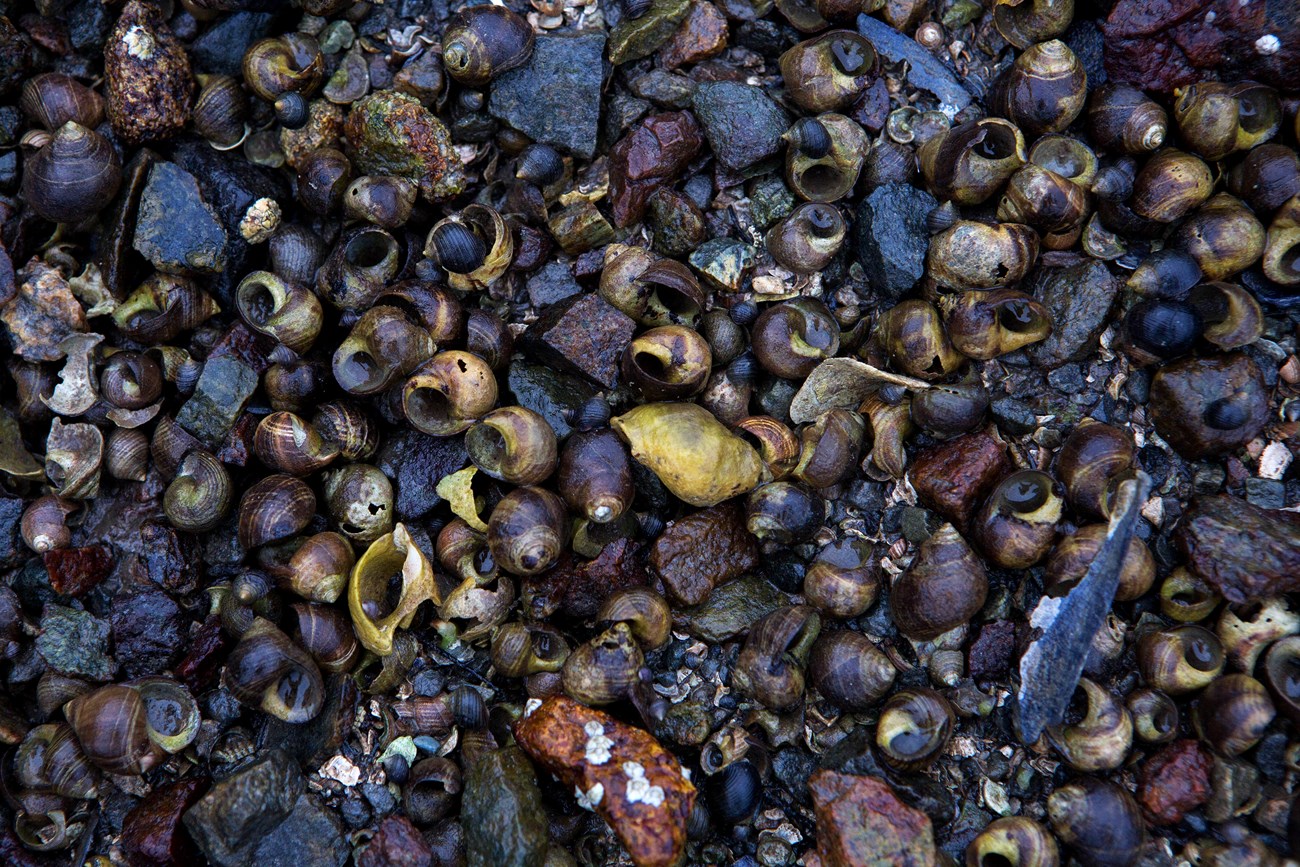Last updated: August 24, 2021
Article
Periwinkles Fast Facts

FOA/ ADMT
Common Periwinkle (Littorina littorea)
- Tentacles: The tentacles on their head are sensory organs that are used to see and taste.
- Movement: They have a strong muscular foot (which is the main part of the body that we see outside of the shell) that helps them to slide along the ground and to hold on tight to the rocks when the waves are crashing on them. Periwinkles cannot swim, but they can breathe underwater.
- Diet: They are herbivores (animals that eat plants). They eat algae by scraping it with their radula (a tongue-like structure that has thousands of tiny microscopic teeth on it.) Even though they are small, the constant scraping by the radula of many individuals can eventually erode rock.
- Predators: Their predators (animals that eat them) include dogwhelks, crabs, sea stars, sea birds, and humans.
- Shell: The hard shell is part of the periwinkle’s body and grows with it. Their shells can be up to 3 cm long. It provides protection from predators and from being rolled around the rocky bottom by crashing waves.
- Operculum: They have an operculum (“little lid”) which is a hard flat disc on their soft body. They can pull themselves into their shell and close the “little lid” to seal the opening. The operculum is used to keep them from drying out and adds protection from predators.
- Introduced: They are nonnative (meaning they aren’t originally from here). They were brought over from Western Europe to be used as escargot (cooked snail). In other words, they were brought here to be eaten. Some people think they might be invasive (a nonnative that has a negative effect on the local environment) and compete with native periwinkle snails for food and space.
- Ecosystem Niche: The shells of dead periwinkles are often inhabited by hermit crabs and are sometimes used as shelter by baby periwinkles and other tiny animals.
- Rocky Coast Habitat: Periwinkle snails live on the rocky coasts. At high tide, the ocean water rises up onto the coast. At low tide, the ocean water lowers. The area between where the high tide reaches and the low tide is called the intertidal zone. They can be found on rocks and in tidepools here. Tidepools are holes, crevices, and depressions in the rocks that trap seawater as the tide goes out.
